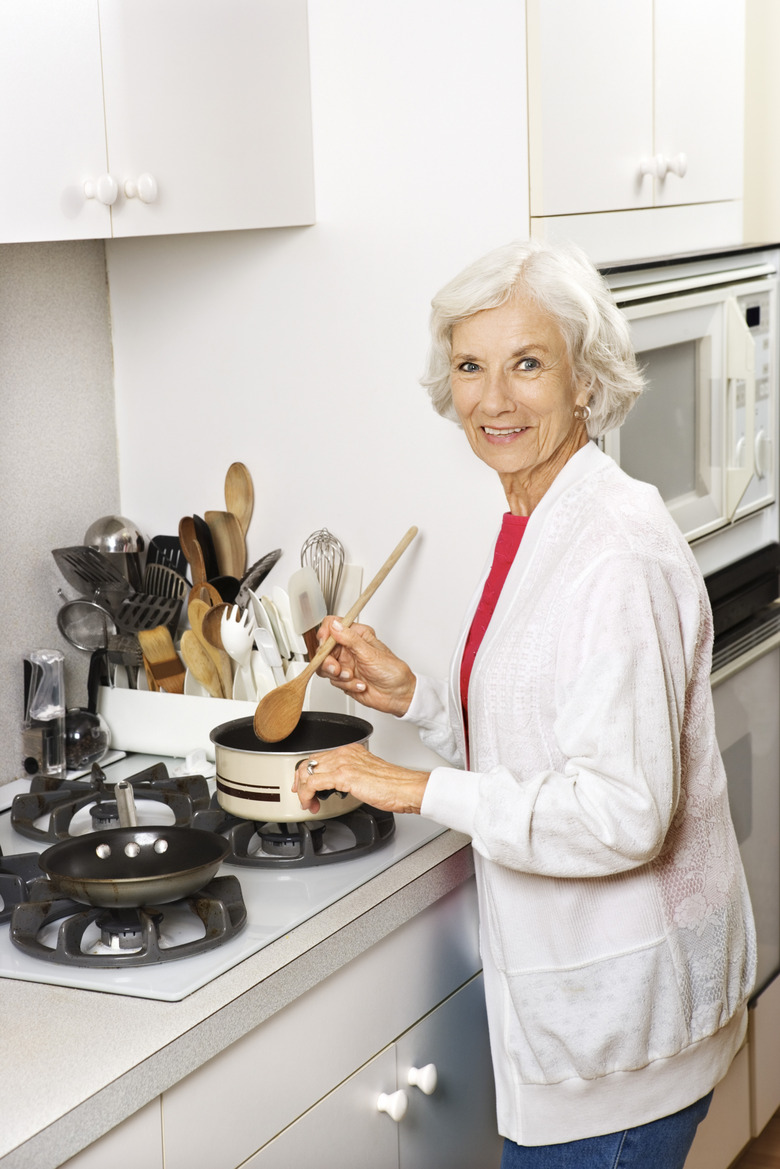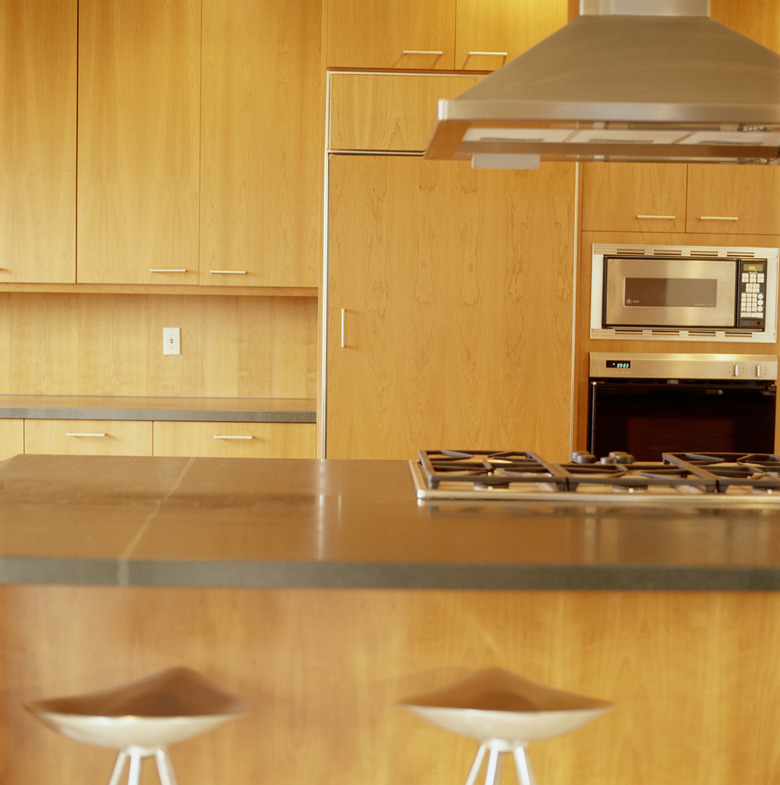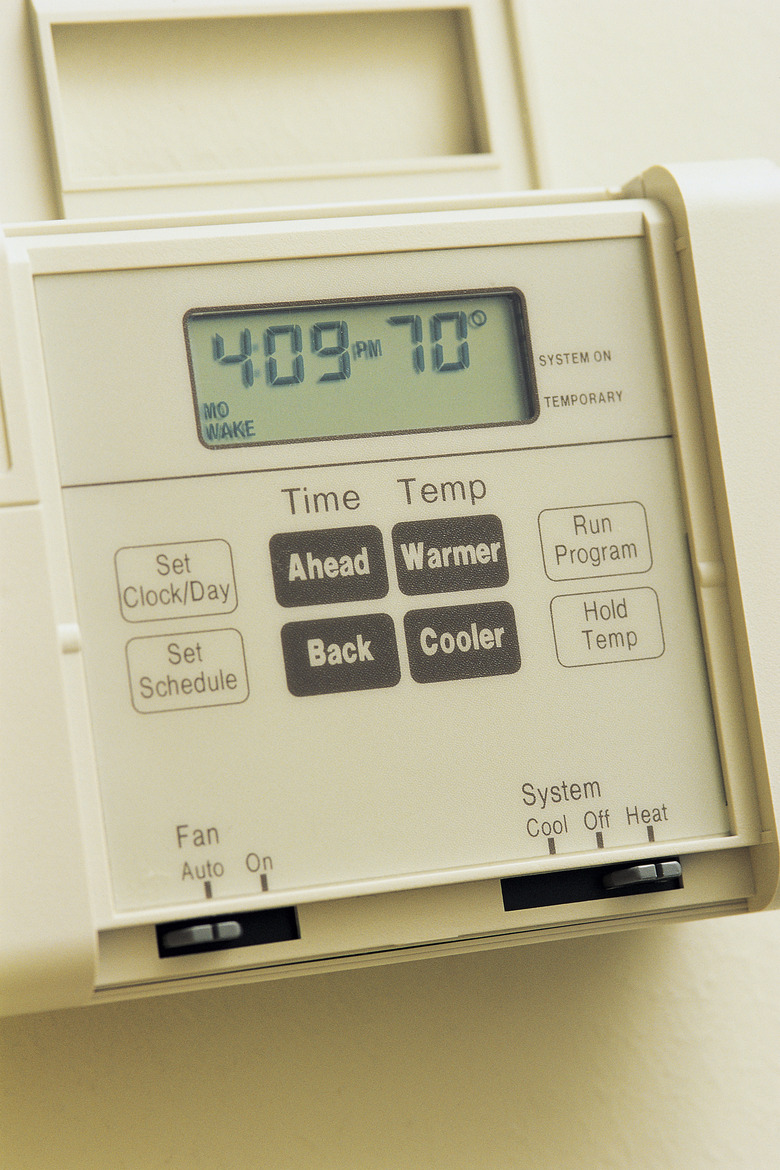How To Increase The Barometric Pressure In A Home
Barometric pressure is the weight of air in a particular location. The effects of low air pressure include greater cooking time, reduced oxygen levels, potential breathing difficulties and increased risk that furnaces and combustion appliances will draw dangerous gases into the home. Altitude, rising temperatures and approaching storms contribute to lower pressure. Increasing home air pressure involves more air and lower inside temperatures.
Step 1
Determine whether outside air pressure is decreasing. Air tends to move from an area of high pressure to an area of low pressure. If the outside air pressure falls, air inside can move outside through openings in the home. Warm, moist conditions and approaching precipitation or storms signal a decrease in outside air pressure.
Step 2
Turn off exhaust fans or reduce the number of them running in the home. Exhaust fans remove air from inside the house to the outside, lowering the inside air pressure. Avoid using exhaust fans when not using the stove or bathroom or when using the dryer, which uses an exhaust fan.
Step 3
Obtain or install a supply-only ventilation system. Supply-only ventilation uses a fan to force outside air into the home. The ducts channel fresh air into several rooms throughout the home. Inside air leaks through bathroom, stove and other vents.
Step 4
Cool the home by running the air conditioner, opening windows on a cool day or using ceiling fans. Cool air sinks, suppressing air molecules and increasing air pressure. Warmer air rises, lowering air pressure.
Things Needed
- Barometer
- Supply-only ventilation system
- Computer
- Internet
- Television
- Radio
- Newspaper
TL;DR (Too Long; Didn't Read)
Allow more time at high altitudes or lower air pressure for cooking. Lower air pressure increases cooking time. The Food Safety and Inspection Service states that water at altitudes of at least 3,000 feet above sea level boils at 208 degrees Fahrenheit, while the boiling point is 212 degrees Fahrenheit at sea level.
To get local air pressure readings, go to the National Oceanic and Atmospheric Administration's website (noaa.gov). Type your zip code in the "Weather.gov Forecast" box. Click "Go." Scroll to the "Current Conditions" and look for the number next to "Barometer."
Use kitchen and exhaust fans briefly to remove odors and clean the air while preserving the in-home air pressure.
Warning
Arthritis Today cites a 2007 Tufts University study indicating that increases in air pressure can trigger joint pain. According to the Oak Ridge National Laboratory, supply-ventilation systems do not remove moisture from outside air. In cold weather, these systems can facilitate mold, mildew or decay if the inside air is humid.
References
- Rotech: Breath Easy: Weather and Breathing
- Arthritis Today: Weather and Pain: Why the Weather Forecast Can Make You Ache
- U.S. Department of Energy: Oak Ridge National Laboratory:
- University of Wisconsin Stephens Point: The Physical Environment: Air Pressure
- NOAA: National Oceanic and Atmospheric Administration
Cite This Article
MLA
Raines, Christopher. "How To Increase The Barometric Pressure In A Home" sciencing.com, https://www.sciencing.com/increase-barometric-pressure-home-12108795/. 24 April 2017.
APA
Raines, Christopher. (2017, April 24). How To Increase The Barometric Pressure In A Home. sciencing.com. Retrieved from https://www.sciencing.com/increase-barometric-pressure-home-12108795/
Chicago
Raines, Christopher. How To Increase The Barometric Pressure In A Home last modified March 24, 2022. https://www.sciencing.com/increase-barometric-pressure-home-12108795/


